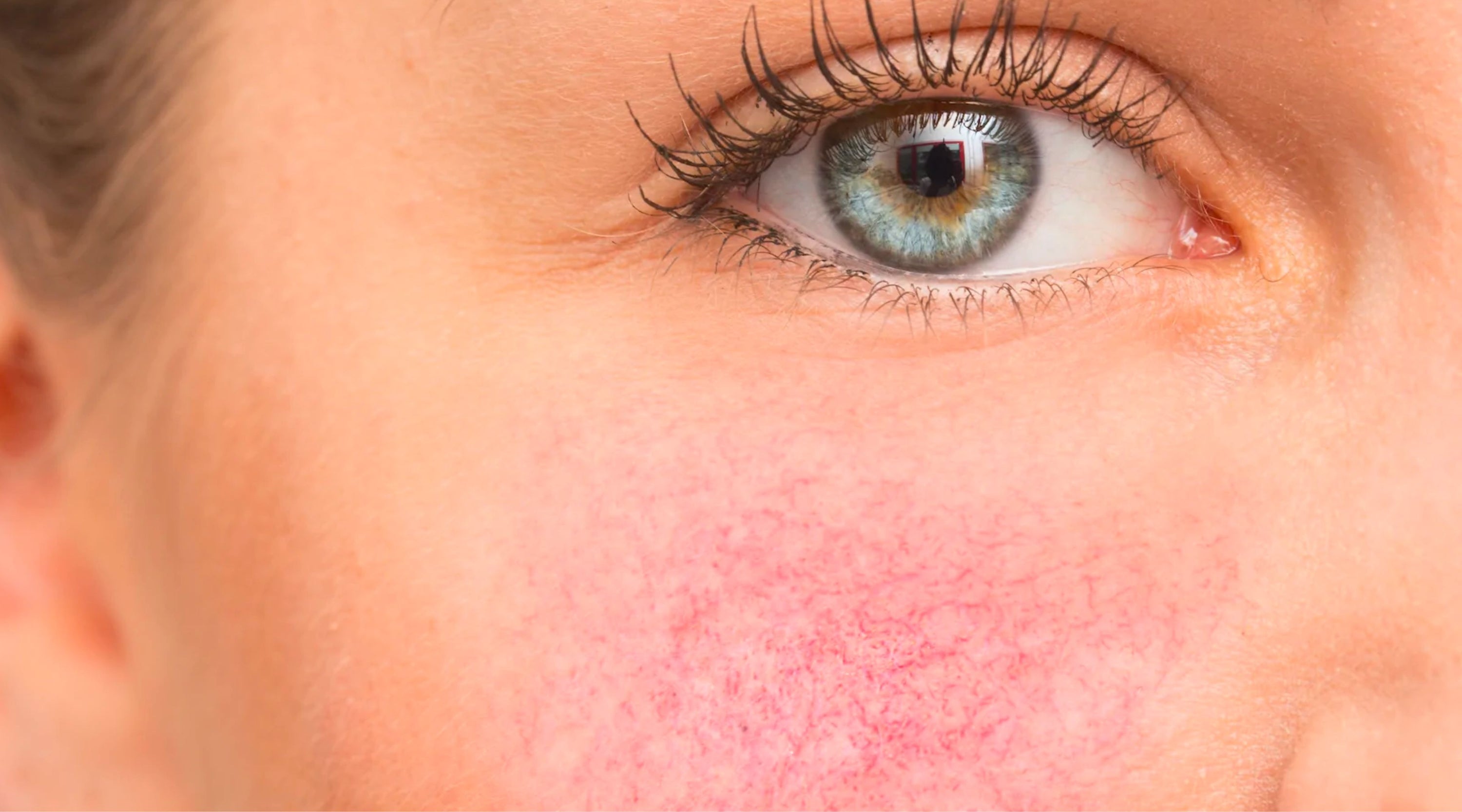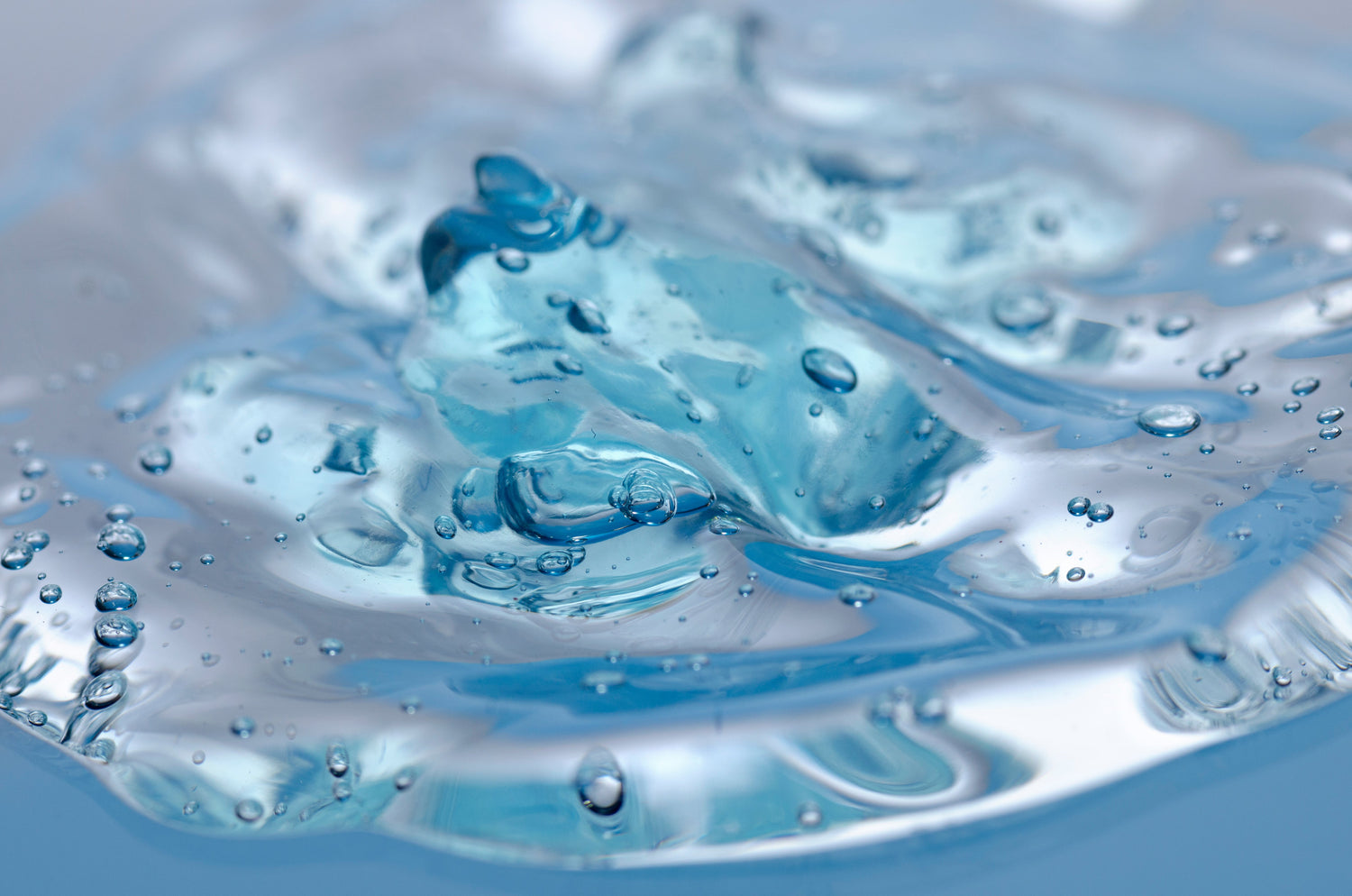Red Cheeks & Blushed Skin? You may have Rosacea!
Rosacea is a skin condition which affects millions of people worldwide, of all ages (1). It is characterised by redness, flushing, and visible blood vessels on the face, as well as sometimes bumps and pimples. While it can occur at any age, it is most commonly observed in middle-aged women. The exact cause of rosacea is unknown, but it is thought to be related to a combination of genetic and environmental factors.
Some common triggers for rosacea flare-ups include sun exposure, alcohol consumption, spicy foods, stress, and certain skin care products (ones with added fragrances and chemicals).
Symptoms of Rosacea!
The symptoms of rosacea can range from mild to severe, and may include (2):
- Persistent redness on the face, particularly the cheeks, nose, and forehead
- Visible blood vessels on the face
- Swelling and bumps on the face, resembling acne
- Dry, rough skin
- Burning or stinging sensations on the skin of the face
- Eye irritation and dryness
Types of Rosacea
The four main types of rosacea include (3):
Erythematotelangiectatic Rosacea
Erythematotelangiectatic rosacea is when there is persistent redness on the face due to small blood vessels becoming enlarged and therefore visible on the skin’s surface.
Papulopustular Rosacea
Papulopustular rosacea “acne rosacea’ is associated with “whitehead” pustules, or red and swollen bumps. These bumps typically appear on the cheeks, chin, and forehead and may be mistaken for acne. With this type of rosacea, facial redness and flushing may also occur.
Phymatous Rosacea
Phymatous rosacea is when the skin becomes thick, bumpy and swollen. This type is more rare, and typically shows in males more than females. It may also be referred to as a bulbous nose, or rhinophyma.
Ocular Rosacea
Ocular rosacea affects the eyes, and causes them to look watery or bloodshot. It may also cause a feeling of burning or irritation to the eyes as it can cause the eyes to become dry. As well as this, cysts may form on the eyelids.
Although one may be diagnosed with one type, they may experience symptoms from the other types too. Identifying the type or types of rosacea that cause your symptoms is just one part of a complete diagnosis. It is important to consult a health professional to understand which of your everyday habits and routines may be contributing to your symptoms.
The emotional and social impact of rosacea can be significant. Many people with the condition report feeling self-conscious and embarrassed about their appearance, and may avoid social situations as a result. This can lead to social isolation and a negative impact on quality of life.
Treatment for Rosacea
Treatment for rosacea typically involves a combination of lifestyle changes and/or medical therapy. Avoiding triggers that cause flare-ups, such as sun exposure and alcohol consumption, can be helpful in managing the condition. Using gentle skin care products (fragrance free, formulated for sensitive skin) and avoiding harsh chemicals can also be beneficial.
For rosacea, try Grahams Natural Rosacea Cream.
Medical treatment for rosacea may include topical medications, such as creams or gels, to reduce inflammation and redness. Oral antibiotics may also be prescribed to help control inflammation and reduce the number of flare-ups. In severe cases, laser or other light-based treatments may be used to remove excess tissue and improve the appearance of the skin.
Rosacea is a skin condition that can have a significant impact on an individual's appearance and quality of life.
For those who struggle with the condition, it is important to consult your doctor or a qualified health professional to determine the process to take for your skin.
- https://medespera.asr.md/wp-content/uploads/ABSTRACT-BOOK.pdf
- https://www.aad.org/public/diseases/rosacea/what-is/symptoms
- https://nyulangone.org/conditions/rosacea/types





